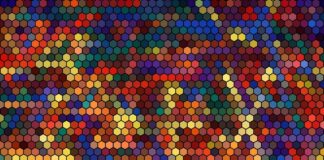Understanding how AI will change the apparel design is essential in today’s rapidly evolving fashion industry. As designers, manufacturers, and brands increasingly turn to intelligent systems for inspiration, production, and marketing, knowing how AI will change the apparel design becomes a competitive advantage. In fact, businesses that fail to adapt to how AI will change the apparel design risk being left behind in an era where speed, sustainability, and personalization define market leadership. This article explores ten transformative facts you must know to stay relevant in this exciting shift.
1. AI is Revolutionizing Fashion Trend Forecasting
AI-powered analytics are changing how trends are predicted by analyzing vast data sets from social media, blogs, sales records, and runway shows. Instead of relying solely on human intuition, designers now leverage AI algorithms that can identify emerging colors, patterns, and styles well in advance. This shift has made forecasting more accurate, reducing waste and ensuring apparel aligns better with consumer demand. Companies like Heuritech and Edited are already using AI to interpret millions of online images and text to forecast what styles will be in demand.
2. Hyper-Personalization in Apparel is Becoming the Norm
AI enables brands to deliver tailored experiences to individual consumers. From recommending specific apparel pieces based on body shape, climate, or style preferences to generating custom designs through AI-driven platforms, personalization has become scalable. Brands like Stitch Fix and The Yes use AI to create curated selections for users, taking into account their unique tastes. As this technology advances, mass customization will become more accessible to smaller brands and independent designers.
3. AI is Streamlining the Apparel Design Process
The traditional design process involved many manual steps, from sketches to prototypes. Now, AI tools like Adobe’s Sensei and CLO 3D allow designers to visualize garments in virtual environments, adjust patterns on the fly, and even simulate how fabric will behave on a moving body. This reduces time-to-market and allows for quicker iterations, encouraging more experimental and inclusive design. It also significantly lowers the cost of design and sampling.
4. Virtual Try-Ons are Enhancing the Online Shopping Experience
One of the main drawbacks of online shopping has been the inability to try clothes before buying. AI and AR (Augmented Reality) are changing that. Tools like Zeekit (acquired by Walmart) allow customers to see how clothes will look on their bodies using real-time simulations. This reduces return rates and enhances consumer confidence in their purchases. Retailers integrating virtual try-ons are seeing increased conversion rates and better customer satisfaction.
5. AI is Driving Sustainable Fashion Practices
Sustainability is at the forefront of modern fashion, and AI is a powerful enabler. By accurately forecasting demand, AI helps reduce overproduction—a major contributor to waste. It also aids in optimizing supply chains, selecting eco-friendly materials, and minimizing energy consumption during manufacturing. Tools like Optitex and Lectra use AI to minimize fabric waste during pattern cutting. AI also supports circular fashion by tracking garment life cycles and suggesting ways to recycle or upcycle them.
6. AI Enhances Apparel Quality Control and Manufacturing
AI systems are now used to monitor quality during production, identifying defects in fabrics or stitching that human eyes might miss. Computer vision algorithms can scan thousands of garments per hour, ensuring consistent quality and reducing the likelihood of returns. AI also helps in automating parts of the manufacturing process, from pattern grading to sewing, speeding up production while maintaining high standards.
7. AI is Empowering Creative Design Assistance
Far from replacing designers, AI serves as a creative collaborator. Platforms like RunwayML, DeepArt, and Google’s DeepDream generate design ideas based on input themes, enabling creatives to experiment beyond their usual boundaries. These tools allow for the blending of art, culture, and fashion history into new, unique apparel collections. With machine learning, AI can also analyze a designer’s past work and suggest patterns or combinations they might not have considered.
8. AI-Driven Inventory Management is Reducing Waste
One of the critical issues in apparel design and retail is overstocking or understocking. AI systems now forecast sales trends, optimize inventory levels, and even decide when and where to launch specific styles. This is particularly useful for global brands managing multiple markets with different preferences and climates. Accurate inventory forecasting ensures that the right products are available at the right time, minimizing markdowns and maximizing profits.
9. AI is Redefining Fashion Marketing and Consumer Engagement
AI tools like ChatGPT and Jasper are revolutionizing how apparel brands create marketing content. They can generate compelling product descriptions, social media posts, and email campaigns tailored to specific audience segments. AI also tracks customer behavior to recommend the best times and channels for engagement. Fashion brands now use predictive analytics to determine which product features resonate most with their target audience, allowing for more effective campaigns.
10. AI is Enabling Real-Time Feedback and Rapid Prototyping
AI facilitates a loop where designers receive real-time feedback on how their products are received by consumers. Platforms can track engagement, fit issues, and satisfaction to inform future designs. Additionally, 3D printing and AI-driven design tools allow for rapid prototyping, enabling brands to test and refine designs before full-scale production. This agility leads to better-fitting, more desirable clothing lines.
Conclusion: The Future of Apparel Design is AI-Integrated
As we’ve explored, the impact of AI on apparel design is multifaceted and transformative. From design conception and consumer personalization to supply chain management and sustainability, AI is not just a technological upgrade—it’s a foundational shift. Embracing how AI will change the apparel design is no longer optional; it’s essential for survival and success in a hyper-competitive industry. The integration of intelligent systems fosters creativity, streamlines operations, and enhances the consumer experience in unprecedented ways.
Forward-looking designers, brands, and manufacturers who invest in understanding how AI will change the apparel design are positioning themselves at the forefront of fashion’s future. The opportunities are vast, and those who master this transformation will lead the industry with innovation, responsibility, and style.














